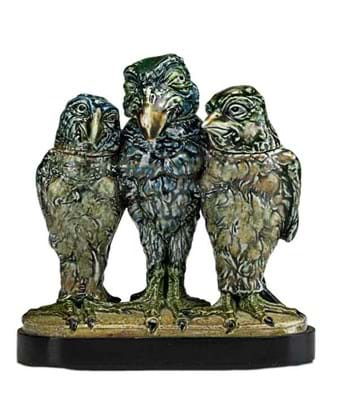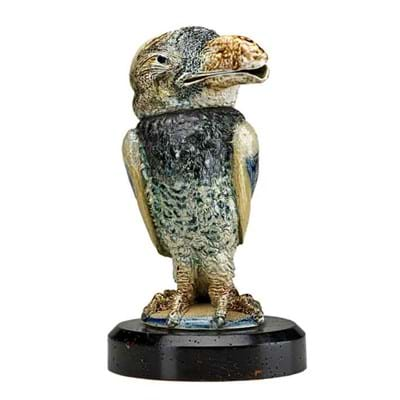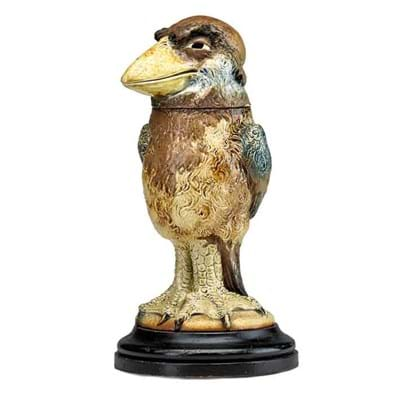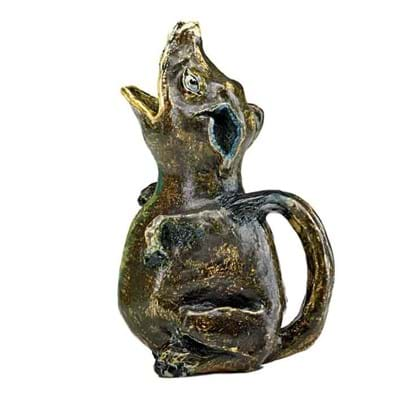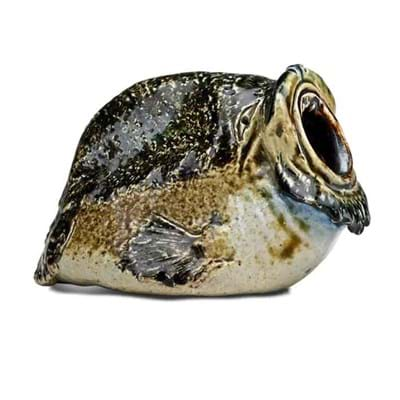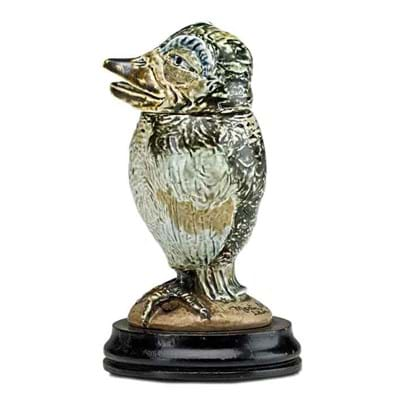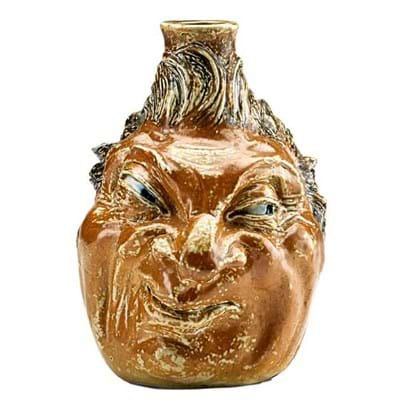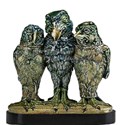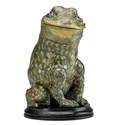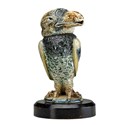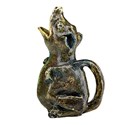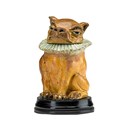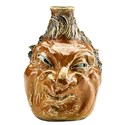The Boobies, Boojums, and Snarks exhibition at the Jordan Volpe Gallery (1981), The Martin Brothers show at Gallery 532 in Soho (1995) and the sale of the encyclopaedic Harriman Judd collection at Sotheby's (2001) are all now part of collecting legend.
And there remain rich pickings for Martin obsessives in the USA as evidenced by sale of the Lillian C. Hoffman Collection of art pottery at Rago Auctions in Lambertville, New Jersey on March 1.
David Rago (who with Philip Chasen organised that influential 97-piece show at Gallery 532 two decades ago) described Lillian and David Hoffman as among the first wave of US collectors of American and European art pottery.
Began in the late 1960s, their collection included a cross-section of factories from Rookwood in Cincinnati to Taxile Doat at Sèvres. But when sold in 99 lots - the opening salvo of a much larger weekend sale of late 19th and 20th century design - a 15-lot group of Martinware tobacco jars, spoon warmers and face jugs proved the highlight.
Purchased in the 1970s and early '80s, and unseen since, more often than not these combined some of Robert Wallace Martin's best gothic forms with good condition.
Bird Group
Triple bird groups are among the most coveted of all Martin tobacco jars. Even back in the autumn of 1995 the 7in (17cm) example in the Gallery 532 exhibition, dated 1.10.1914 - some six weeks after the onset of the First World War - was priced at $26,000. It was later resold at Woolley & Wallis of Salisbury in October 2005 for £40,000.
Remarkably there were two in this sale. Lillian Hoffman's trio, of similar size and dated Southall 29.1.1914, was one of a number of pieces of A-list Martin purchased from dealer Ed Pascoe in 1980.
It was in excellent condition, retaining its original wooden base and even the leather bands that provided an air-tight seal when head and body were secured together. It was estimated at $30,000-40,000 but the bank of phone bidders from the UK, the US, Canada and Germany (that ensured up to five combatants for every lot in this section) saw it sell at $90,000 (£56,250).
The price is thought to be the second highest price paid at auction for Martinware - more than the £50,000 bid for a grotesque at Woolley & Wallis in November 2012 but short of the £67,000 the Salisbury salerooms achieved for a 16.5in (42cm) high bird jar in June 2013.
It was also more than twice the bid taken for another triple bird group offered later in the New Jersey sale by a different vendor. This slightly smaller group, decorated in shades of blue and grey and dated6-1897,was again undamaged but lacked its base and was perhaps an early re-glaze. Also estimated at $30,000-40,000, it took a more modest $37,500 (£23,440).
Back to the Hoffman collection. Two of her larger-scale single 'wally birds' - also purchased from Pascoe in 1980 - took $70,000 (£43,750) each. Each depicting characters from Victorian London modelled in avian form, one was dated for May 1886 (a relatively early model), the latest and largest at 13¾in (35cm) high, for March 1899.
Collecting Martinware birds is very much a love affair and it is easy to be seduced by a mischievous wink, a knowing smile or a sly sideways glance. But condition counts too. Again, save the occasional glaze flake and firing line that are to be expected with Martinware, these were both deemed excellent examples.
Toad and Dog
More unusual forms were a 10.5in (27cm) high toad jar with a sinister fixing stare, signed and dated 12-1895 (estimate $15,000-20,000) and a smaller 5¾in (14cm) jar modelled as Punch's dog Toby dated 8-1903 (estimate $8000-12,000).
The toad, in good condition and a very appealing design, took the third $70,000 (£43,750) bid of the sale. The ruff-wearing dog, a better known model that here had several unsightly firing lines, took $16,000 (£10,000).
Surviving receipts from the Edwardian period indicate that pieces such as these, among the most engaging of the brothers' ceramic eccentricities, have long been beyond the pocket of the working man.
In 1913, large bird jars in the firm's Holborn shop were priced between 37 shillings to 55 shillings each (£1.85-£2.75). Miniatures were more affordable, a tiny bird available at 8s 6d (42½p).
The 5in (12cm) high example here, suitably modelled as a chick and dated for November 1896, brought a double-estimate $13,000 (£8125).
The buyer's premium was 25%.
Exchange rate £1 = $1.60


